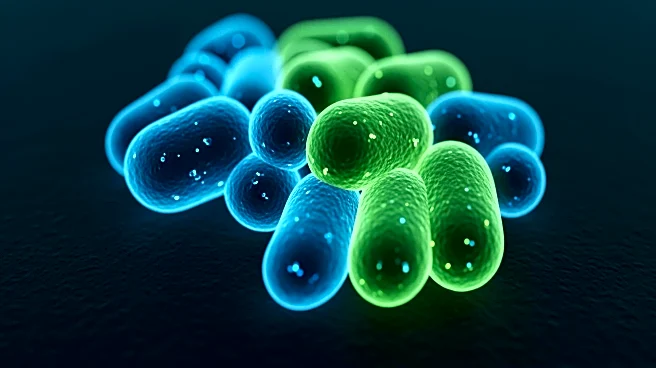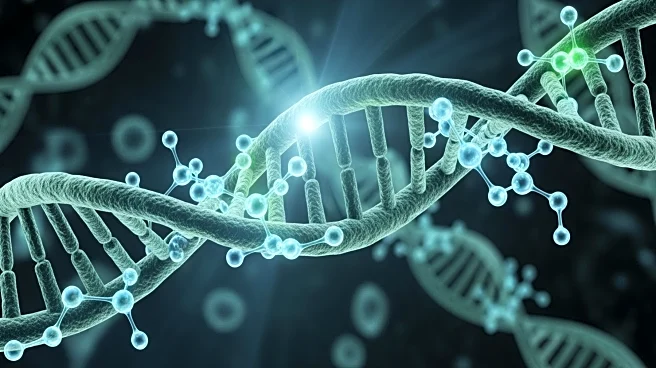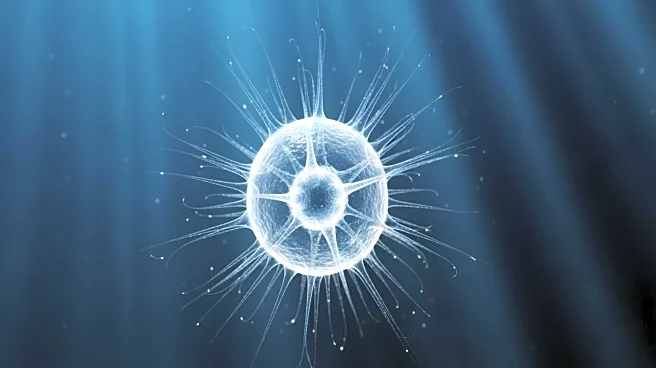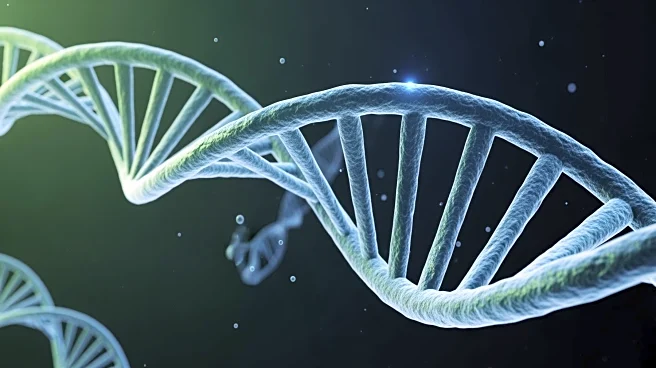What's Happening?
Recent research has expanded the understanding of trivalent actinides' role in supporting microbial alcohol metabolism. Scientists used a mutant strain of AM1 bacteria, evolved to accumulate gadolinium
(Gd), to study alcohol oxidation. The evo-HLn strain demonstrated growth in the presence of lanthanides and actinides, with notable accumulation of Gd3+. Experiments confirmed that actinides like americium (Am) and curium (Cm) can support bacterial metabolism, similar to lanthanides. The study highlights the potential of actinides to replace lanthanides in the active site of alcohol dehydrogenase enzymes, enabling bacterial survival and metabolism.
Why It's Important?
This research provides insights into the biochemical interactions between actinides and microbial organisms, which could have implications for bioremediation and environmental management. Understanding how actinides support microbial metabolism may lead to innovative approaches for managing radioactive waste and contaminated environments. The ability of bacteria to utilize actinides for energy production could offer new strategies for harnessing microbial processes in industrial applications, potentially reducing the environmental impact of nuclear materials.
What's Next?
Further studies are needed to explore the catalytic activity of actinides compared to lanthanides in microbial metabolism. Researchers aim to develop more stable enzyme constructs to better understand the interaction between actinides and alcohol dehydrogenase enzymes. These investigations may lead to advancements in artificial metalloenzyme technology, enhancing the efficiency of microbial processes in various applications. Continued research could also inform the development of biotechnological solutions for environmental cleanup and resource recovery.
Beyond the Headlines
The study of actinides in microbial metabolism raises questions about the ethical and environmental implications of using radioactive materials in biological systems. It also highlights the potential for cross-disciplinary collaboration between microbiology, chemistry, and environmental science to address complex challenges. The findings may influence regulatory policies on the use of actinides in industrial and environmental contexts, promoting sustainable practices and safety measures.












